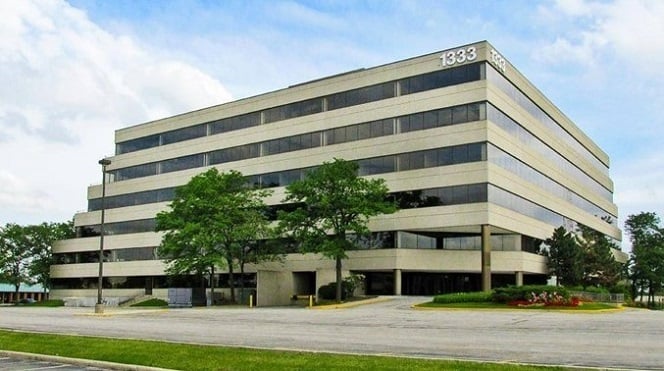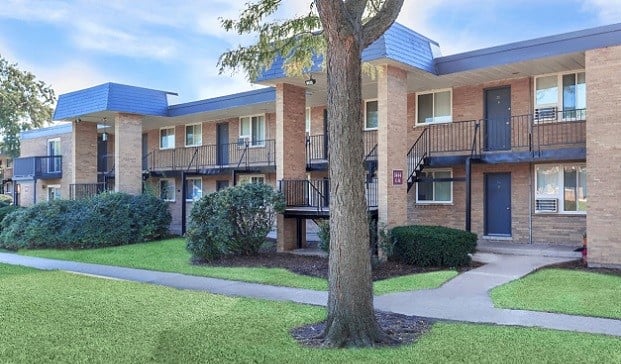Trends in the housing market are on the upswing, and the stock market has shown remarkable earnings in the past year, all positive signs for a recovering economy. However, historical statistics show that one in three Americans pay more than 30% of their income in rent, all while wages remain stagnant or decrease, and cost of living continues to rise. Yet for every 1.5 new housing units built, 1 is demolished and the U.S. Department of Housing and Urban Development (HUD) estimates that 10,000 public housing units a year are lost due to aging, while the need for affordable housing for low-income renters continues to increase. So while new construction is rebounding, and inventory is increasing for high-end units, the inventory is decreasing for affordable rental units, leaving far fewer options for lower-income wage earners.
As refinance rates remain low and new construction gains steam, traditional lending options are getting their mojo back (GNMA, Fannie Mae, Freddie Mac, CMBS, etc.) In counterpoint, HUD is typically a counter-cyclical source of funding (See here for more information). However, in order to remain a viable option in the evolving funding markets, HUD has a new strategy for keeping interest in FHA-insured loans by initiating new programs, particularly their RAD program. The RAD program is a way for HUD to push their mission during a transition cycle, by offering creative finance options to rehab aging, affordable housing units, even as the wave of new construction units at a higher price point continues to surge.
The RAD program is an important part of HUD's effort to close the gap by preserving the country's affordable rental housing, while at the same time adding value to it through publicly-funded energy efficiency improvements. The essence of HUD's approach is to lower operating costs via energy efficiency strategies, which in turn will help keep operating costs, and subsequently, rents low, thus providing affordable, desirable units to a portion of the population that isn't getting any smaller.
The process is one that requires a detailed, structured approach, as one is not only dealing with aging properties, but is also trying to incorporate new technologies for energy efficiency; all while working with various housing authority requirements, not to mention residents that are already in place. To that end, a higher level of assessment is needed in order to identify areas of concern, formulate a cost effective renovation scope of work, and maintain the over arcing goals of HUD. HUD's RAD Physical Condition Assessment (PCA) incorporates many different due diligence strategies in order to provide a high level of analysis that will aid in transforming an inefficient property into one that can sustain lower rents without sacrificing style, functionality and desirability.
The HUD RAD PCA includes a HUD MAP style, intrusive level analysis of the long-life building systems, as well as an energy audit of the historical consumption of the existing systems in order to determine potential areas of improvement. The HUD RAD PCA incorporates the findings of the Energy Audit and Utility Baseline Analysis, which in turn paints a clear picture of the existing conditions and deficiencies, and potential areas for improving performance and sustainability at a given property. Suffice it to say, the RAD PCA is nothing like a standard ASTM, Freddie Mac or Fannie Mae report, or even a HUD MAP report for that matter.
More specifically, the HUD RAD PCA takes an in-depth look at the existing systems, including those which would not typically be assessed at a high level as part of a baseline site assessment, such as elevators, boilers, electrical, plumbing, and fenestrations, to name a few. These items may or may not prove to provide instant energy efficiency improvements and savings, but will need to be addressed in order to “modernize” the property, and extend its useful life, thus making it a viable long term investment.
Conversely, the Energy Audit looks closely at the energy and water consumption of the existing components, provides a payback analysis, and identifies energy efficient alternatives to the existing mechanical, electrical and plumbing (MEP) systems. The Utility Consumption Baseline works in conjunction with the Energy Audit by collecting and analyzing utility usage at a property, and includes resident and owner paid utilities for a 12 to 24-month period, which allows for energy benchmarking and potential consumption comparison of the current systems to newer available technologies and higher energy efficient rated systems.
In the short term, the HUD RAD program, in utilizing intrusive assessment techniques, Energy Auditing, and Utility baseline modeling, creates a personalized path to realizing an aging property's potential for energy efficiency, sustainability, and overall improvement. In the long term, the level of scrutiny and higher reporting standards being pioneered by HUD could become the due diligence norm, as other agencies and entities join the green movement.
Lastly, HUD is taking their green initiative a step further…the introduction of the paper reduction act challenged government agencies to try and reduce paper waste. HUD has taken the initiative by introducing the CNA e-tool, which has been released for early review and will be implemented by 2015. The CNA e-tool will allow the related parties to work on preparing the individual components of the submittal on a virtual, real time platform. Effectively eliminating the need for paper reports/submittals, the CNA E-tool brings the “going green” mantra full circle!
Want to continue reading?
Become a Free ALM Digital Reader.
Once you are an ALM Digital Member, you’ll receive:
- Breaking commercial real estate news and analysis, on-site and via our newsletters and custom alerts
- Educational webcasts, white papers, and ebooks from industry thought leaders
- Critical coverage of the property casualty insurance and financial advisory markets on our other ALM sites, PropertyCasualty360 and ThinkAdvisor
Already have an account? Sign In Now
*May exclude premium content© 2025 ALM Global, LLC, All Rights Reserved. Request academic re-use from www.copyright.com. All other uses, submit a request to [email protected]. For more information visit Asset & Logo Licensing.








